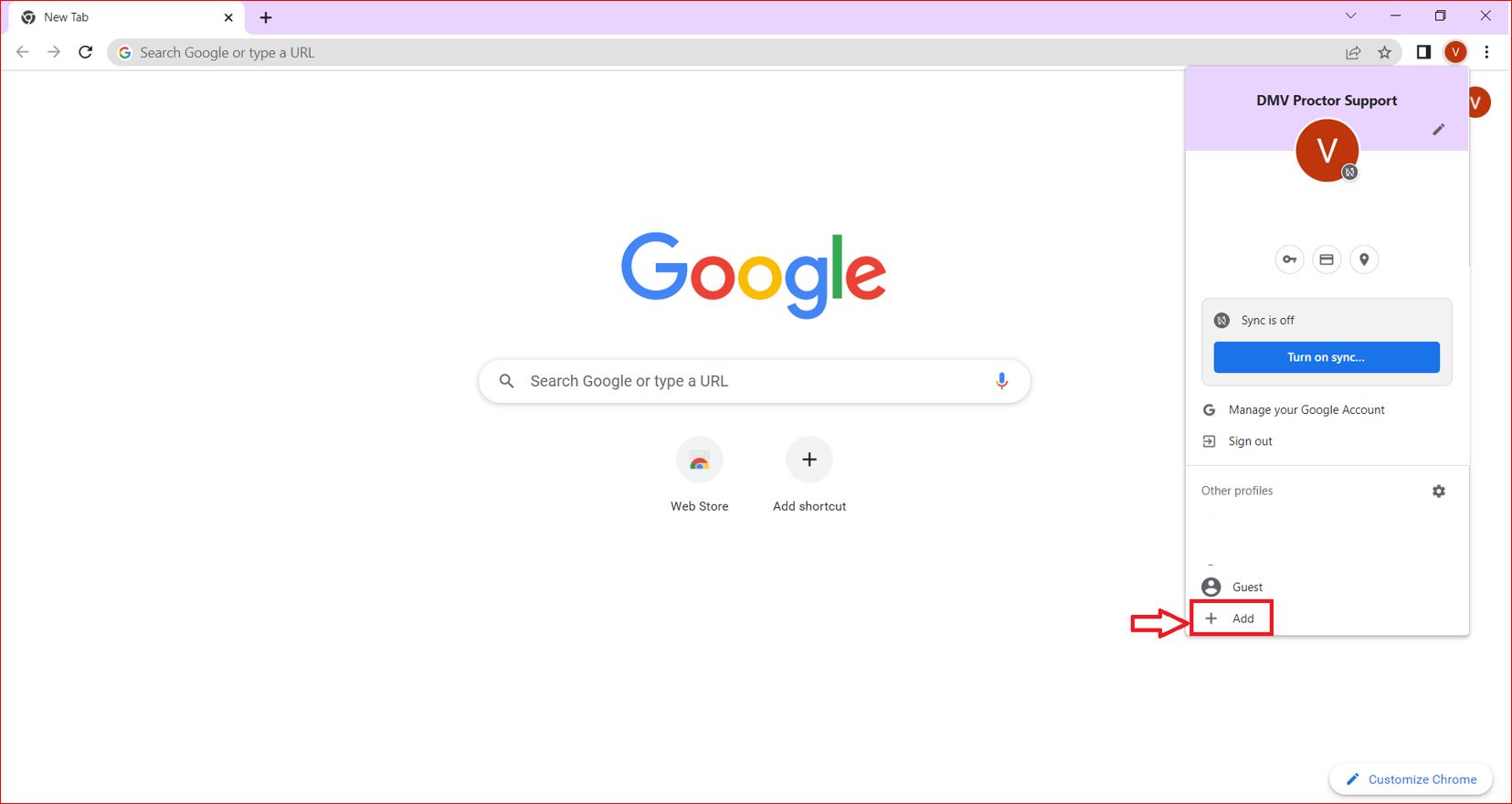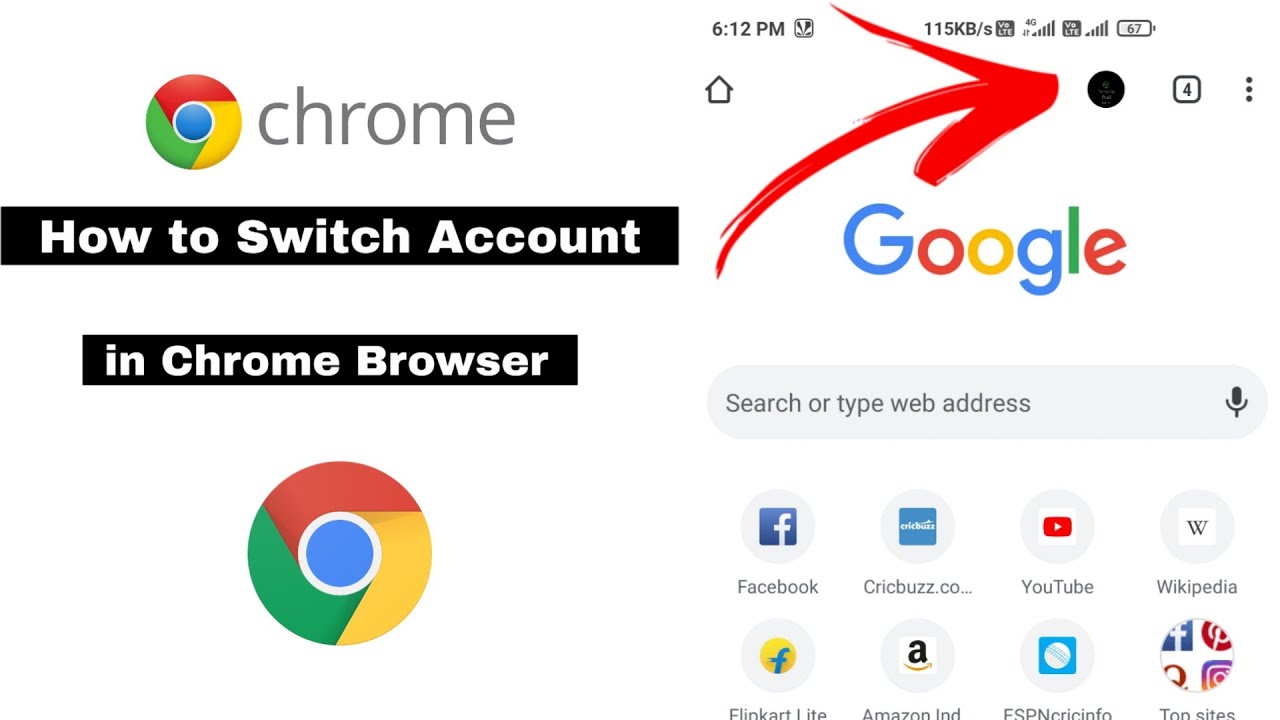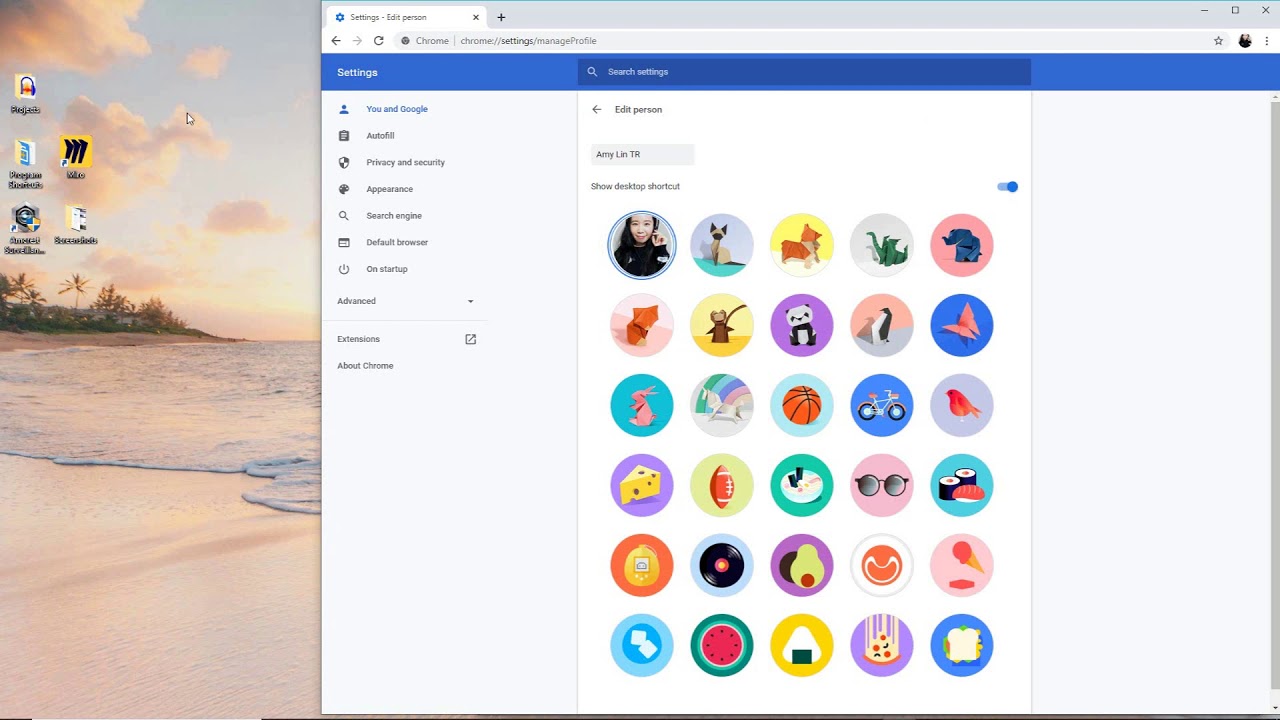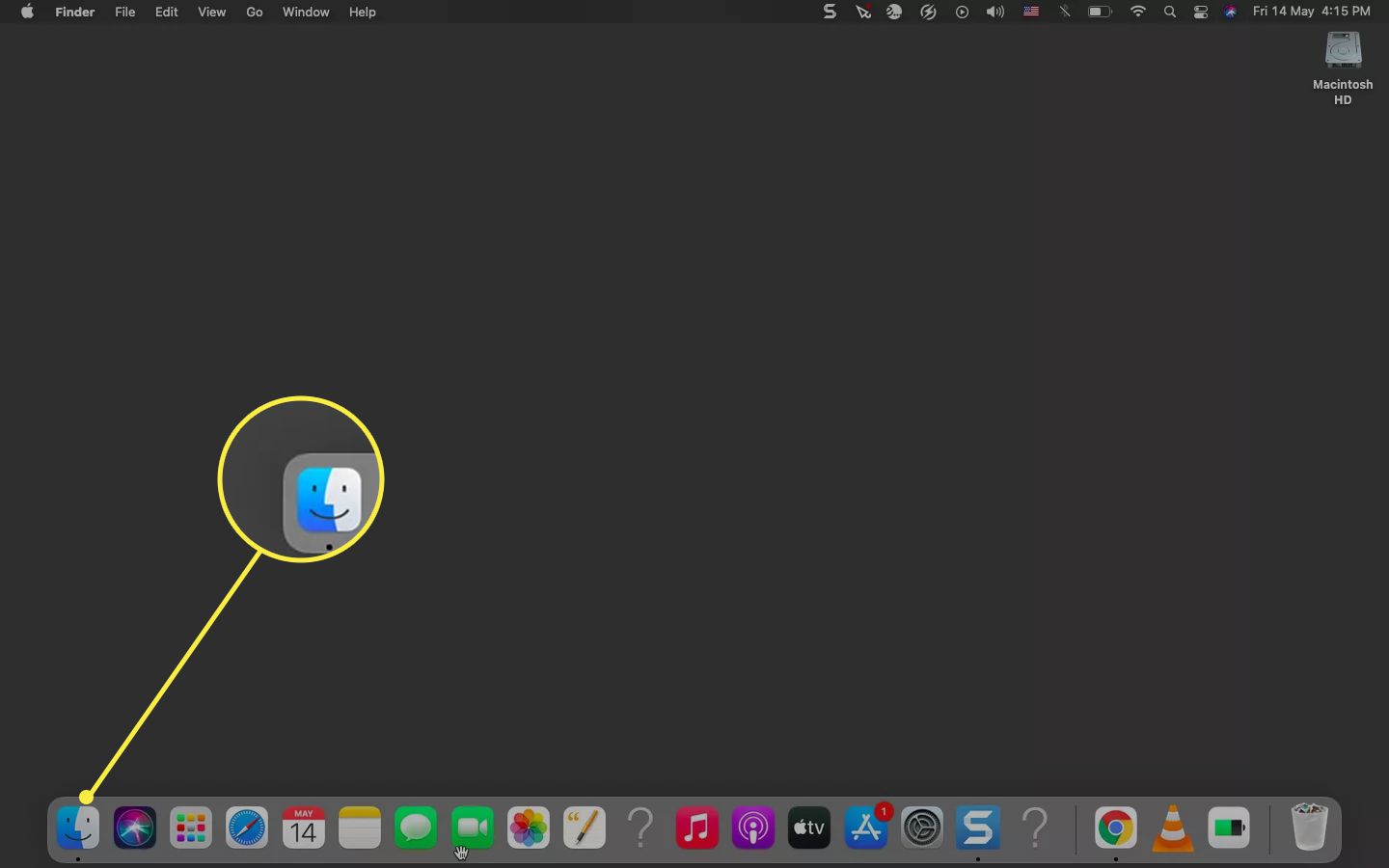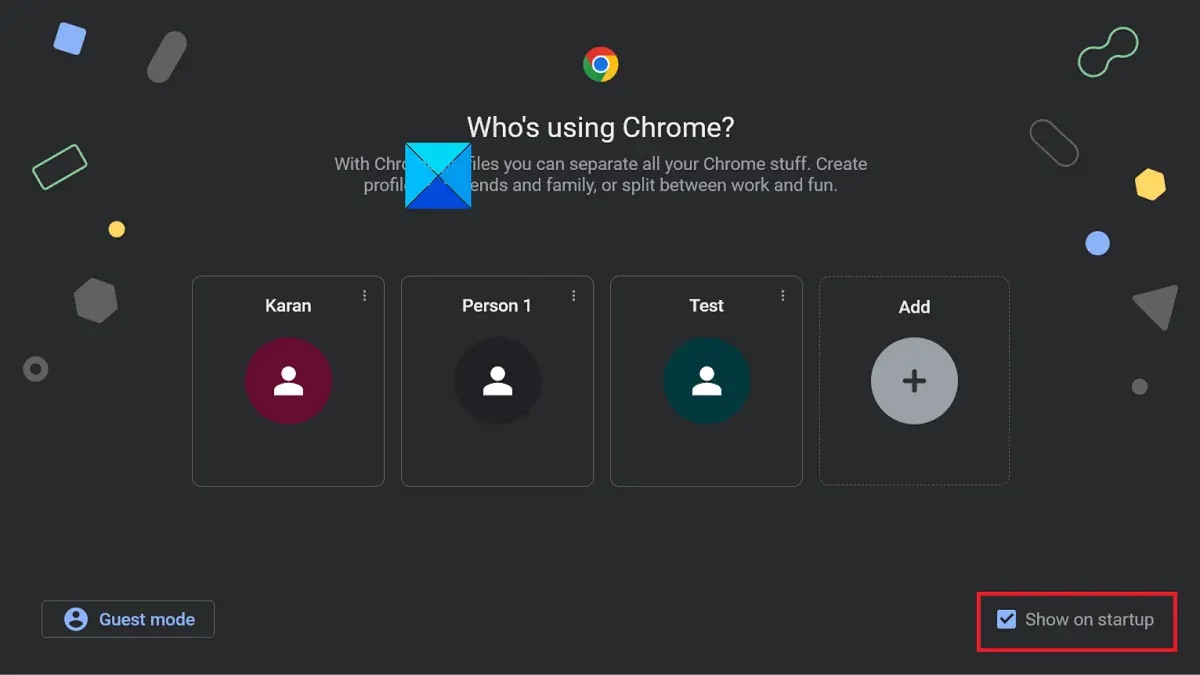Introduction
Adding a new Chrome profile can be a game-changer for your browsing experience. Whether you want to keep your work and personal browsing separate, share a computer with family members, or simply organize your digital life, creating a new Chrome profile offers a myriad of benefits. With a new profile, you can have distinct sets of bookmarks, browsing history, extensions, and even separate logins for various websites. This means you can maintain a clear division between your professional and personal online activities, ensuring a seamless and efficient browsing experience.
In this guide, we will walk you through the simple and straightforward process of adding a new Chrome profile. By following these steps, you can unlock the full potential of Chrome's profile management feature and tailor your browsing environment to suit your specific needs. Whether you're a seasoned Chrome user or just getting started, creating a new profile is a valuable skill that can enhance your productivity and organization while using the browser.
So, if you're ready to take control of your browsing experience and harness the power of Chrome's profile management, let's dive into the step-by-step process of adding a new profile. Whether you're a professional looking to streamline your work-related browsing or a casual user seeking to keep personal and recreational activities separate, creating a new Chrome profile is a simple yet impactful way to customize your online experience.
Step 1: Open Chrome and go to Settings
To begin the process of adding a new Chrome profile, the first step is to open the Chrome browser on your computer or device. Once Chrome is launched, navigate to the top-right corner of the window and click on the three vertically aligned dots, which represent the Chrome menu. This will open a dropdown menu with various options.
From the dropdown menu, locate and select the "Settings" option. This will direct you to the Chrome Settings page, where you can access a wide range of customization and management features for your browser. The Settings page serves as a central hub for configuring Chrome's behavior, appearance, and functionality, making it an essential destination for users looking to personalize their browsing experience.
Upon reaching the Settings page, you will be presented with a plethora of options and categories, ranging from basic settings like search engine preferences and startup behavior to advanced configurations such as privacy and security controls. This comprehensive array of settings allows users to fine-tune Chrome to align with their specific preferences and requirements.
In addition to the standard settings, the Chrome Settings page also provides access to additional features and functionalities, including extensions, themes, and advanced options for power users. This makes it a pivotal location for managing all aspects of the Chrome browser, ensuring that users have the tools and flexibility to tailor their browsing environment to their liking.
By navigating to the Settings page, you are taking the first step towards creating a new Chrome profile, setting the stage for the subsequent actions that will lead to the successful addition of a personalized browsing environment. With the Settings page at your disposal, you are poised to embark on a seamless and intuitive journey towards enhancing your Chrome experience through the creation of a new profile.
Now that you have successfully accessed the Chrome Settings page, you are ready to proceed to the next step in the process of adding a new profile, bringing you closer to unlocking the full potential of Chrome's profile management feature.
Step 2: Click on "Add" under People
Once you have accessed the Chrome Settings page, the next pivotal step in adding a new Chrome profile is to navigate to the "People" section. This section is where you can manage and create distinct profiles within the Chrome browser, allowing for personalized browsing experiences tailored to individual preferences and requirements.
Upon reaching the Settings page, look for the "People" section, which is typically located towards the top of the page. Within this section, you will find a list of existing profiles, each represented by a name and an associated icon. These profiles may include default profiles, as well as any additional profiles that have been previously created.
To initiate the process of adding a new profile, locate and click on the "Add" button within the "People" section. This action will prompt a new window to appear, presenting you with the option to create a new profile from scratch. By clicking on "Add," you are signaling your intent to expand the scope of your browsing experience by introducing a fresh profile into the Chrome ecosystem.
The act of clicking on "Add" signifies a pivotal moment in the process, as it marks the transition from managing existing profiles to actively creating a new one. This simple yet significant action sets the stage for the customization and personalization of your browsing environment, empowering you to establish distinct sets of preferences, bookmarks, and extensions within the new profile.
As the new window materializes, you will be prompted to input a name for the new profile, allowing you to assign a label that resonates with its intended purpose or user. This naming process enables you to differentiate between various profiles, ensuring clarity and organization within your browsing environment.
In addition to naming the new profile, you will also have the opportunity to select an icon that visually represents the profile. This visual identifier serves as a quick and intuitive way to distinguish between different profiles, adding a layer of personalization and visual appeal to the browsing experience.
By clicking on "Add" under the "People" section and proceeding to name and select an icon for the new profile, you are actively shaping the foundation of a personalized browsing environment within Chrome. This step marks the inception of a distinct digital space tailored to your specific needs, setting the stage for further customization and refinement as you progress through the profile creation process.
Step 3: Choose a name and icon for the new profile
After clicking on "Add" under the "People" section, you are presented with the pivotal task of choosing a name and icon for the new profile. This step is crucial as it sets the stage for personalizing and differentiating the new profile within the Chrome browser.
When selecting a name for the new profile, consider its intended purpose and usage. Whether it's for work, personal browsing, or any other specific need, the name should reflect the primary function or user associated with the profile. This not only adds clarity but also helps in quickly identifying and accessing the desired profile when switching between different browsing contexts.
In addition to the name, the choice of an icon for the new profile holds significance. The icon serves as a visual representation of the profile and plays a key role in distinguishing it from other profiles. Chrome offers a range of visually appealing icons, allowing you to select one that resonates with the nature of the profile or aligns with your personal preferences. The visual aspect of the icon adds a touch of personalization and makes the browsing experience more engaging and visually appealing.
By carefully choosing a name and icon for the new profile, you are actively shaping its identity within the Chrome browser. This process not only adds a personalized touch to the browsing environment but also streamlines the management of multiple profiles, ensuring seamless navigation and usage.
The act of selecting a name and icon for the new profile marks a significant milestone in the profile creation process, as it lays the foundation for a distinct and tailored browsing experience. With the name and icon in place, the new profile begins to take shape, ready to accommodate specific preferences, bookmarks, and extensions, thereby enriching the overall browsing experience within Chrome.
Step 4: Customize the new profile settings
Customizing the settings of a new Chrome profile is a pivotal step that empowers users to tailor their browsing environment to align with their specific preferences and requirements. Upon creating a new profile and assigning a name and icon, the next phase involves delving into the customization of settings to fine-tune the browsing experience.
One of the key aspects of customizing the new profile settings is the ability to manage and personalize the browsing experience. This includes configuring preferences related to the appearance of the browser, such as theme selection and layout options. By customizing the visual aspects of the browser, users can create a personalized and visually appealing environment that resonates with their individual tastes and preferences.
In addition to visual customization, users have the opportunity to manage privacy and security settings within the new profile. This includes controlling permissions for websites, managing cookie preferences, and configuring security protocols to ensure a safe and secure browsing experience. By customizing these settings, users can establish a balance between convenience and security, aligning the browsing environment with their privacy preferences.
Furthermore, customizing the new profile settings extends to managing the synchronization of data across devices. Chrome offers seamless synchronization capabilities, allowing users to access their bookmarks, history, and settings across multiple devices. By customizing synchronization settings, users can ensure that their browsing data is accessible and consistent across their digital ecosystem, enhancing convenience and continuity.
Another crucial aspect of customizing the new profile settings is the ability to manage and configure extensions. Chrome extensions add functionality and versatility to the browsing experience, and customizing extension settings within the new profile allows users to tailor their browsing environment to suit their specific needs. Whether it's organizing, enabling, or disabling extensions, users have the flexibility to curate a set of tools that enhance their productivity and efficiency.
By customizing the new profile settings, users can create a tailored and personalized browsing environment that aligns with their preferences and usage patterns. This level of customization empowers users to shape their digital experience within Chrome, ensuring that the browser adapts to their needs and enhances their overall productivity and enjoyment.
As users navigate through the process of customizing the new profile settings, they are presented with a range of options and configurations that enable them to fine-tune their browsing environment. By leveraging these customization capabilities, users can create a personalized and optimized browsing experience within the new profile, setting the stage for seamless and efficient usage across various contexts and scenarios.
Step 5: Start using the new profile
Once you have completed the process of creating and customizing the new Chrome profile, you are ready to embark on a seamless and personalized browsing experience within the newly established digital space. The act of starting to use the new profile marks the culmination of the profile creation journey, opening the door to a tailored and optimized browsing environment that aligns with your specific preferences and requirements.
Upon initiating the use of the new profile, you will immediately notice the distinct and personalized nature of the browsing environment. The name and icon you selected for the profile serve as visual identifiers, quickly differentiating it from other profiles and adding a touch of personalization to the browsing experience. This visual distinction ensures that you can effortlessly identify and access the new profile, streamlining the process of transitioning between different browsing contexts.
As you begin to explore the new profile, you will have the opportunity to populate it with personalized bookmarks, browsing history, and extensions, tailoring the environment to suit your specific needs. This level of customization allows you to curate a set of resources and tools that align with your usage patterns, enhancing productivity and efficiency within the browsing environment.
Furthermore, the customized settings within the new profile, including visual preferences, privacy configurations, and synchronization options, contribute to a tailored and cohesive browsing experience. By aligning these settings with your preferences, you can ensure that the browsing environment reflects your individual requirements, providing a seamless and intuitive platform for your online activities.
The new profile serves as a dedicated digital space that accommodates your distinct browsing needs, whether it's for work-related tasks, personal exploration, or any other specific usage scenario. This segregation of browsing contexts ensures clarity and organization, allowing you to maintain separate sets of preferences, bookmarks, and extensions within distinct profiles, thereby enhancing efficiency and focus within each context.
By starting to use the new profile, you are embracing a browsing experience that is finely tuned to your individual preferences and requirements. This personalized environment empowers you to navigate the digital landscape with ease, efficiency, and a sense of ownership, ensuring that your browsing experience within Chrome is optimized to align with your unique needs and usage patterns.







